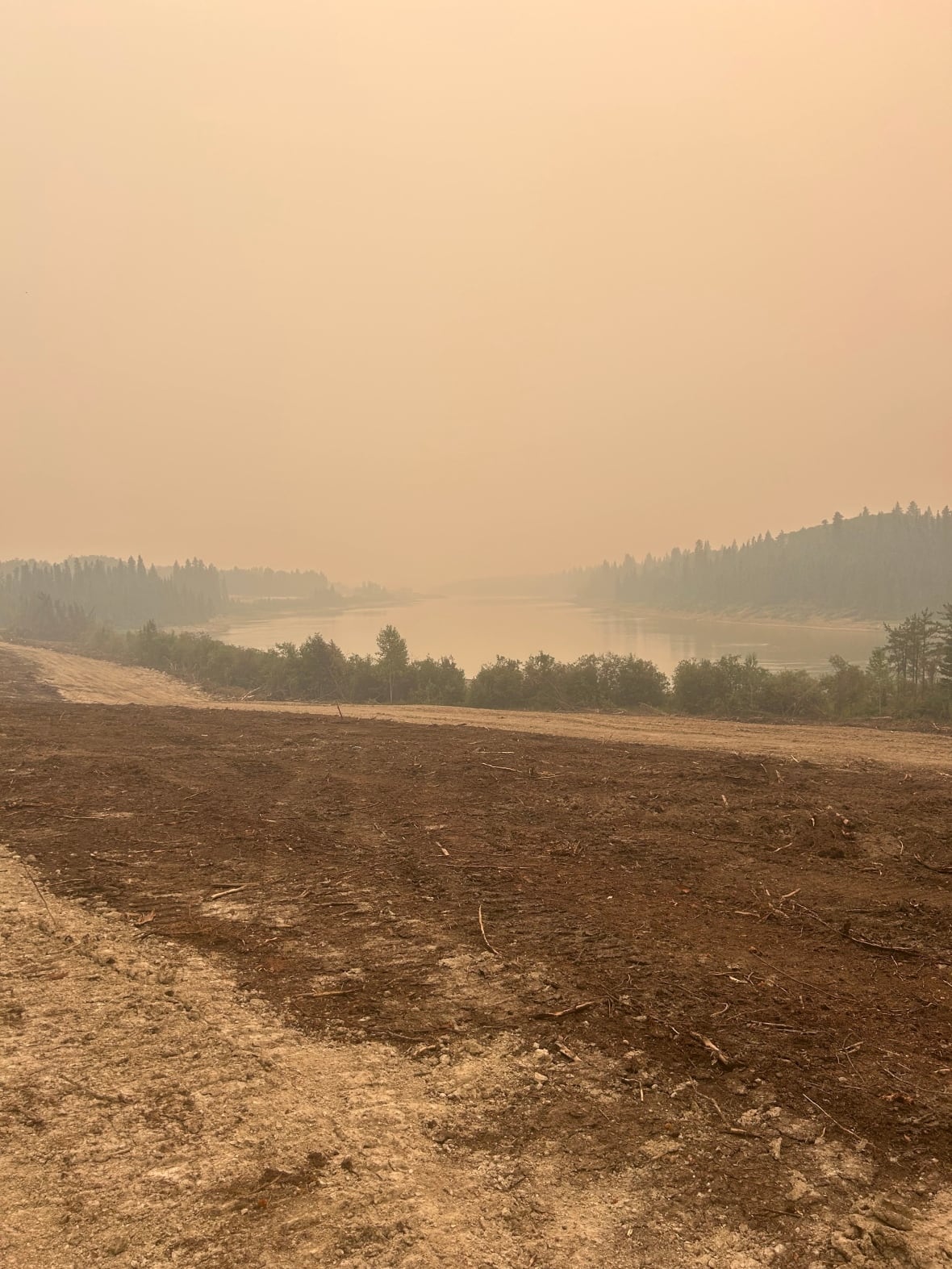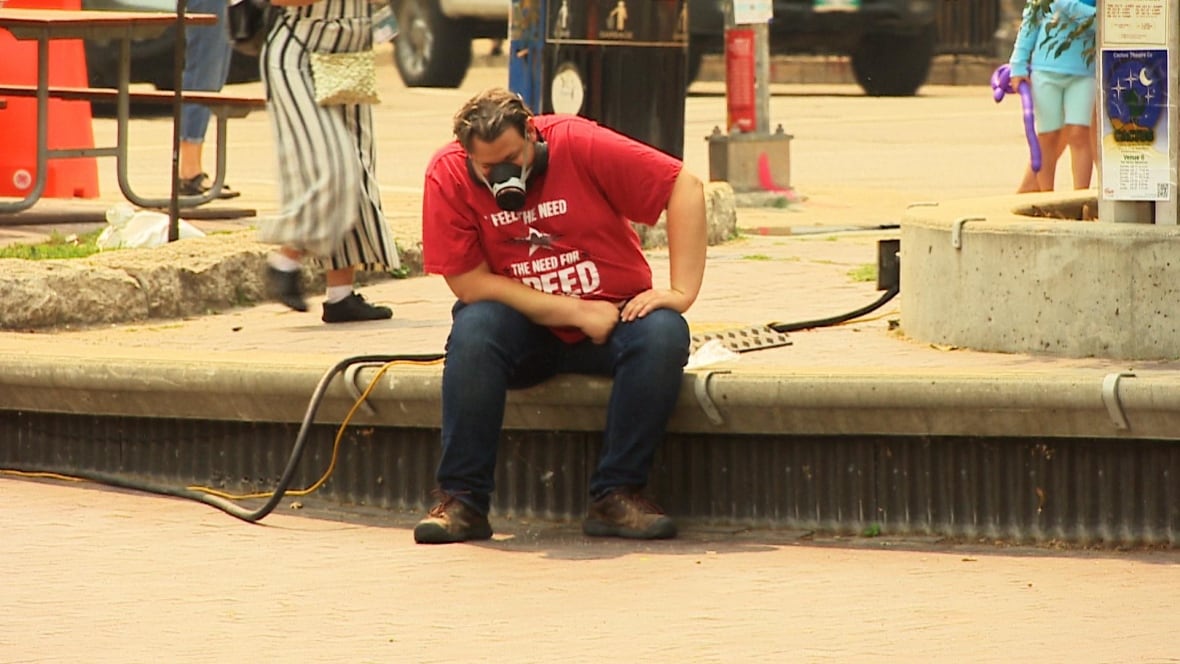Summer 2025 blows past record as Winnipeg's smokiest on record
City surpasses nearly 65-year-record with 306 smoke hours logged as of Monday

Winnipeg surpassed a nearly 65-year-old smoke record over the weekend, making 2025 the city's smokiest summer ever since Canada started tracking smoke hours more than seven decades ago.
"Over this past holiday weekend, we actually did surpass that previous record in both Winnipeg and Thompson for the smokiest year," said Crawford Luke, a Winnipeg-based meteorologist with Environment and Climate Change Canada.
The agency has been tracking smoke hours — a measurement taken by weather-monitoring stations when visibility drops to 9.7 kilometres (six statute miles) or less due to smoke — in the city since 1953.
Up until this week, the smokiest year on record was 1961, with 304 smoke hours. A new record was set on Monday with 306 hours.
Winnipeg has surpassed the 1961 summer wildfire season and overall annual total, which is counted from April to October.
Last month was the smokiest month in Winnipeg's recorded history, the agency said, as Manitoba continues to face its worst wildfire season in three decades. There were 189 smoke hours logged in July, overtaking the 163 smoke hours recorded in August 1961.
That year saw more wildfires char more than one million hectares of forest during a historic drought.
'The air quality is the worst I've ever seen it'
More than 1.5 million hectares have burned across Manitoba so far this year, the province's most recent fire situation report showed on Monday.
Nearly 40 per cent of all land burned is in northern Manitoba, where many communities have been forced to evacuate due to fire and smoke.
Kylie Matechuk, who grew up in Thompson and was visiting her family over the long weekend, said the sky was so thick with smoke and ash that it was as if she was seeing her hometown through a "brown, sepia filter."

"We always grew up with smoke that you smelled in the summer, but I've never seen it like this in my life," Matechuk said.
"The air quality is the worst I've ever seen it in my life," she said.
So far in 2025, the northern city has reached 574 smoke hours, according to Environment and Climate Change Canada.
That's already 13 per cent higher than the previous record of 507 set in 1989, during a historic wildfire season that displaced 24,500 evacuees and burned nearly 3.3 million hectares across Manitoba.
About 65 kilometres west of Thompson, Nisichawayasihk Cree Nation was put under a mandatory evacuation order on Saturday.
About 2,500 residents were forced to leave over the weekend as wildfire threatened the only road into the community, located about 600 kilometres northwest of Winnipeg. Others were expecting to leave, but conditions have improved slightly and as a result evacuations have been paused NCN Deputy Chief Marcel Moody told CBC News on Tuesday.
A wildfire outside the community has burned more than 6,980 hectares, the most recent provincial data shows.
"The smoke situation has been terrible all summer," Moody said on Sunday, stressing it's the worst he's seen in his entire life.
"Our people have been breathing in this smoke pretty much the whole summer. I don't know what the impact's going to be in terms of the impact long-term," Moody said.
'It's affecting the whole body'
Michael Brauer, a public health professor at the University of British Columbia who specializes in the impact of air pollution, said wildfire smoke can have varying effects on people's health — but all Canadians should take them seriously.
"We see the whole range of impacts, everything from people needing to go to emergency rooms all the way to dying with these kinds of smoke events," Brauer said.

He said smoke can irritate the lungs, making existing symptoms worse for people who have respiratory conditions like asthma and chronic obstructive pulmonary disease.
Smoke exposure can also affect the heart and brain, he said, with evidence showing hazy skies can accelerate existing heart disease, diabetes and dementia.
"Most people don't consider that it's affecting the whole body," Brauer said.
He said people should avoid going outside to limit smoke exposure. When that's not an option, wearing an N95 mask can offer protection. Brauer encourages people to use an air purifying device inside their homes, or to visit a local clean-air shelter if they don't have access to one.
He said Canadians will have to adapt to wildfire smoke, as summers now carry a consistent haze.
"This is not going to go away. This is for the rest of the century, throughout our lifetimes we are going to be experiencing this," Brauer said.
Environment and Climate Change Canada's Luke said all Canadians may need to brace for what Manitobans have been experiencing each summer in recent years.
"The way the last few summers have gone, I don't think it's unreasonable to wonder if this is maybe a preview of what summer might be like for a lot of Canada in the years to come," Luke said.
As the fire season continues, Luke said the smoke-hour tally will likely climb further in Winnipeg and Thompson.
"There's still a lot of summer left to go and the fires continue to burn. I would expect we're going to continue adding on to these new records, unfortunately," he said.
Find the latest wildfire information at these sources:
Are you an evacuee who needs assistance? Contact Manitoba 211 by calling 211 from anywhere in Manitoba or email 211mb@findhelp.ca.
With files from Robson Fletcher, Andrew Kitchen, Josh Crabb, Santiago Arias Orozco, Stephanie Cram

